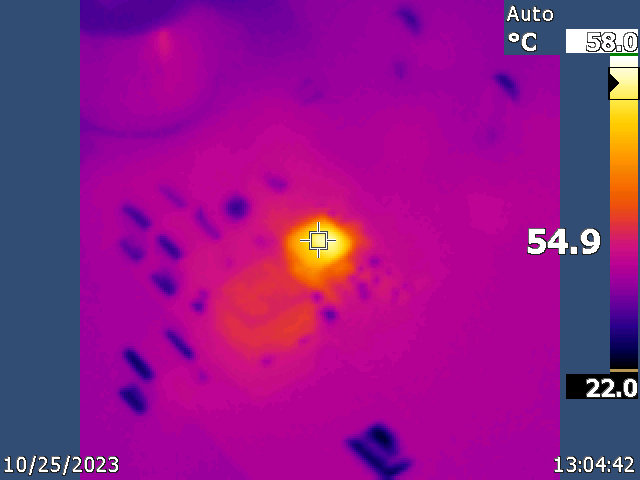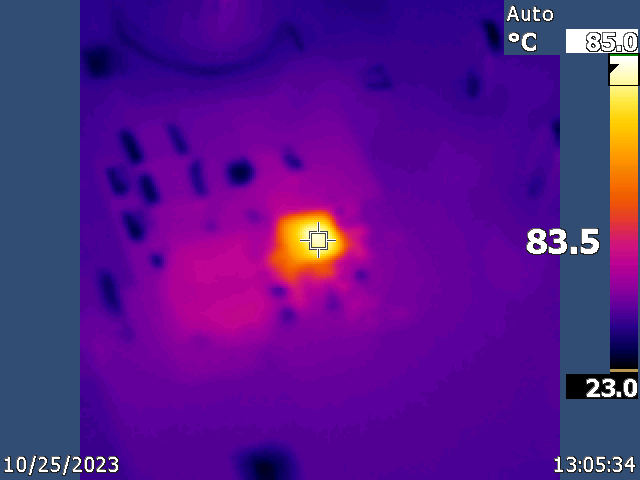SNVU857 November 2023 LMR66430-Q1
3.1.1.1 Noise and Thermal Performance
Conducted Emissions
The LMR66430-2EVM was evaluated on a CISPR 25, Class 5, pre-compliance, conducted emissions (CE) setup. The LMR66430-2EVM was evaluated with a 13.5V input supply and 3 A resistive load. CISPR 25, Class 5, CE scan (150kHz to 108MHz) provides the scan results showing a passing result by approximately 10 dB for both average and peak detect.
 Figure 3-1 CISPR 25, Class
5, CE scan (150kHz to 108MHz)
Figure 3-1 CISPR 25, Class
5, CE scan (150kHz to 108MHz)Thermal Capture
The LMR66430-2EVM was evaluated with a 13.5V input and a resistive load. Thermal capture with 2 A Load and Thermal capture with 3 A Load demonstrate the case, temperature rise from room temperature (25°C). This gives a good approximation to the junction temperature with the temperature gradient being very small across the thin case and junction.
 Figure 3-2 Thermal capture
with 2 A Load
Figure 3-2 Thermal capture
with 2 A Load Figure 3-3 Thermal capture
with 3 A Load
Figure 3-3 Thermal capture
with 3 A Load